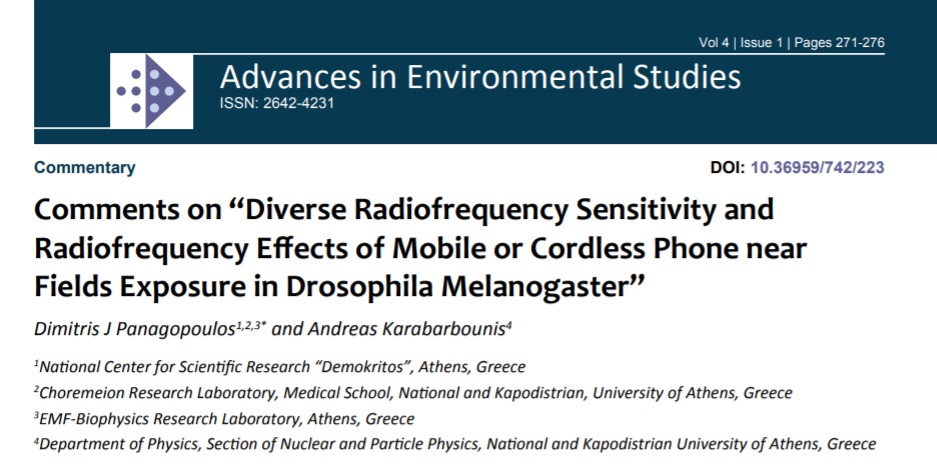
Commentary paper and explanatory text.
Abstract
The paper by Geronikolou, et al. (2014) “Diverse Radiofrequency Sensitivity and Radiofrequency Effects of Mobile or Cordless Phone near Fields Exposure in Drosophila melanogaster” [1] published in Plos One supposedly presents original work on the effects of mobile and cordless phones electromagnetic fields (EMFs) on Drosophila melanogaster reproduction. The paper reports that two of its authors “conceived and designed the experiments”. This is not the case. The paper is a replication of the experimental procedures introduced by Panagopoulos, et al. (2004) “Effect of GSM 900-MHz Mobile Phone Radiation on the Reproductive Capacity of Drosophila melanogaster” [2], and applied since then in many publications (Panagopoulos, et al. 2007a; b; 2010; 2013; Panagopoulos, 2016; 2017; 2019) [3-5,15,16,20,21]. Geronikolou, et al. followed the same experimental methodology without reporting replication or even citing the original study. Then, they differentiated on secondary points – employing a different statistical method, calculating theoretically the near-field instead of measuring it, not sham-exposing the control groups, and including experiments with cordless phones based on the same procedures – which led them to serious flaws and misleading conclusions. Our present commentary is a necessary action to protect authorship and restore science in regards to experiments with mobile and cordless phones.
